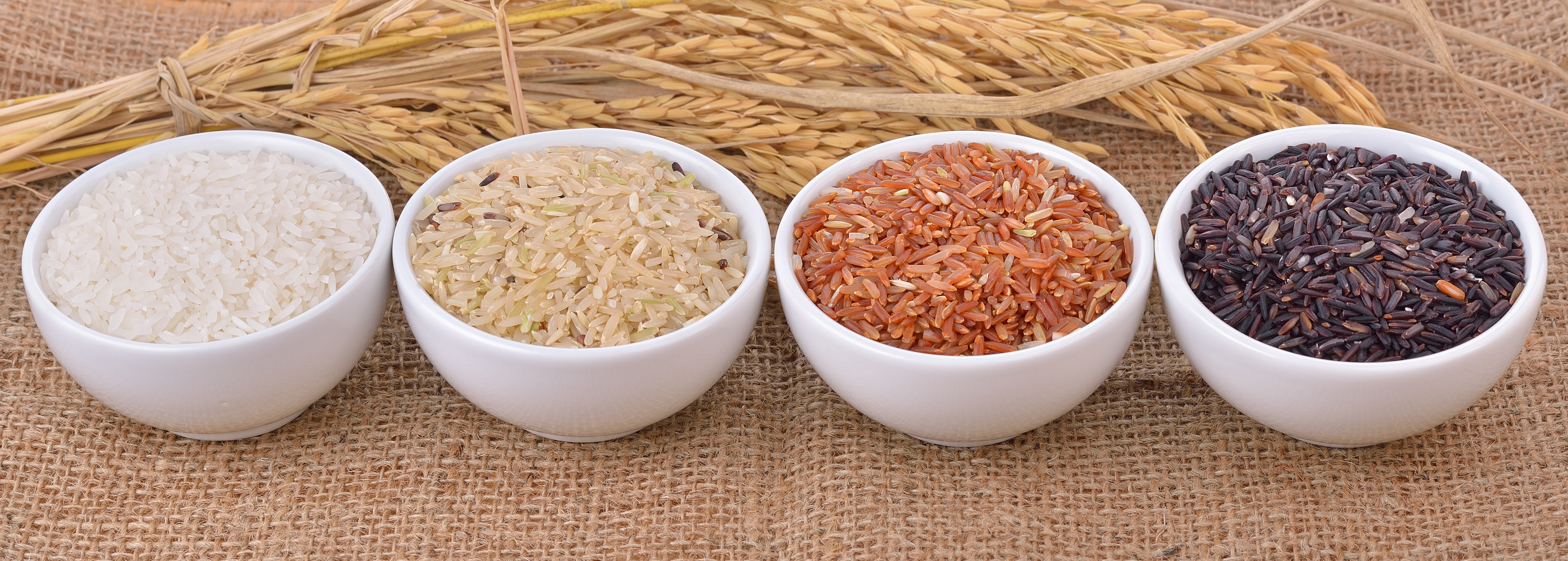Rice: A Different Kind of Carb
Rice is a big deal. Not only is it one of the world’s three most important food crops (alongside wheat and corn), it can come in one of over 100,000 different varieties. But all 100,000+ versions of rice are still classified as carbohydrates—and some see this as an issue.
Many low-carb diets (such as the keto diet) tend to forbid rice, especially white rice. Rice is indeed a carbohydrate in that it will be broken down into simple sugars by your body. But rice is not your average carbohydrate. Versatile and nutrient-packed, rice can still find a happy spot in your healthy eating rotation.
Refined White Rice vs. Brown Whole Grain Rice
Rice comes in many different sizes, colors, and textures, but you most likely experience it in its refined, white form.
White rice is processed in a way that removes some of its fiber, vitamins, and minerals by removing the husk and the brown color from the grain, leaving white rice. While white rice is technically a processed food, in this case, that processing adds important nutrients such as B vitamins to create the fortified white rice available at grocery stores.
Brown (whole grain) rice still has some of its husk, giving it additional nutrition along with its namesake color. This also lends brown rice a chewier texture and a nuttier flavor, so it may not always easily substitute 1:1 with white rice in most recipes.
As a complex carbohydrate, unrefined brown rice brings to the table naturally occurring B vitamins, riboflavin, folic acid, calcium, iron, zinc, selenium, and magnesium. It’s also true that brown rice has more fiber than white rice. However, if you eat your white rice with vegetables and/or legumes (and you probably are), you should be getting enough fiber and nutrients in your meal overall.
Rice can also be somewhere in between. Parboiling, a steam-treating process, increases rice’s protein content while keeping important nutrients such as fiber and B vitamins. The end result is a slightly yellow, slightly chewier rice (when compared to refined white rice).
Which Rice is Right For Me?
Eating a diet rich in whole grains, such as brown rice, has been demonstrated by researchers to be a health-promoting diet. Brown rice may help keep you feeling fuller for longer and can boost your fiber intake.
White rice has a higher glycemic index than brown rice. This means your blood sugar may go up more after eating white rice compared to brown rice. If you have any condition that requires you to monitor your blood sugar, talk to your healthcare provider if you are concerned about the glycemic index of white rice.
Additionally, if time is an issue, it takes longer to cook brown rice compared to white rice when using a rice cooker or stovetop. However, using an instant pot can greatly reduce cooking time for both brown rice and white rice.
Choosing a rice variety will probably be more of a call of taste and preference. As long as the rice you select fits into your calorie goals, this wholesome grain won't lead you astray on your weight loss journey.
Some Rice Ideas to Try
Let rice be your culinary passport
As a versatile and global staple food, you’ll find rice starring in meals from cultures around the world—in curries, in stir-fries, in paellas, in poké bowls, and more.
Rice can serve as the base of many new recipes for you to try. You’ll find the world has put together nearly endless ways to combine rice and vegetables.
Build a rice blend
If you’re concerned about the glycemic index of white rice but love the taste and texture, consider creating a mix of cauliflower rice (frozen or homemade) and white rice. Swapping out half the rice for cauliflower will help lower the calorie count while not ditching white rice entirely.
If you’re more interested in creating some more flavorful complex carbohydrate bases, mixing rice with another whole grain, such as quinoa or barley, can add depth.
Expand your rice horizons
Rice can also be enjoyed crunchy. Rice crackers are gluten-free crackers that make great hummus dippers or cheese plate partners. Airy rice cakes are low-calorie vehicles for almond butter, berries, cheese, and other high-protein and nutritious toppings.
CON-1972-001 3/24

